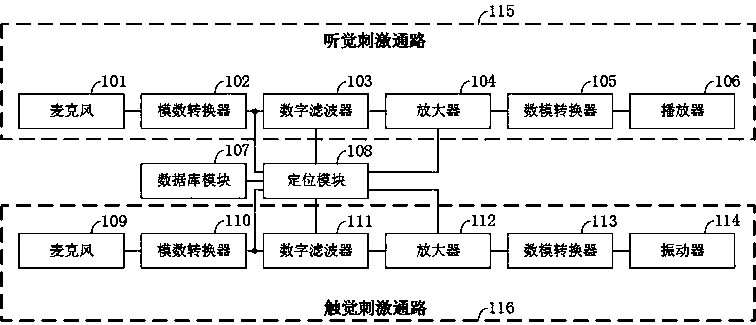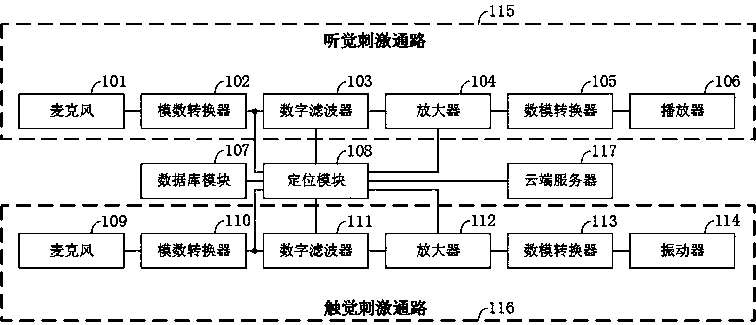Hearing aid device
A hearing aid device and analog-to-digital converter technology, which is applied in the directions of hearing aids, hearing aid signal processing, and customized settings of overall acoustic characteristics, can solve the problems of good and bad hearing aid effects, large fluctuations, and inability to improve the adaptability of hearing aid devices. Ability and other issues to achieve the effect of improving the language recognition rate
- Summary
- Abstract
- Description
- Claims
- Application Information
AI Technical Summary
Problems solved by technology
Method used
Image
Examples
Embodiment Construction
[0034] The following will clearly and completely describe the technical solutions in the embodiments of the present invention with reference to the accompanying drawings in the embodiments of the present invention. Obviously, the described embodiments are only some, not all, embodiments of the present invention. Based on the embodiments of the present invention, all other embodiments obtained by persons of ordinary skill in the art without making creative efforts belong to the protection scope of the present invention.
[0035] The embodiment of the invention discloses a tactile-assisted hearing aid device and a hearing aid system, which can adjust internal parameters according to the source of the sound to improve the patient's language recognition rate, and has the advantages of wide application range and low cost.
[0036] see figure 1 , figure 1It is a structural schematic diagram of a tactile-assisted hearing-aid device disclosed in an embodiment of the present invention...
PUM
 Login to View More
Login to View More Abstract
Description
Claims
Application Information
 Login to View More
Login to View More - Generate Ideas
- Intellectual Property
- Life Sciences
- Materials
- Tech Scout
- Unparalleled Data Quality
- Higher Quality Content
- 60% Fewer Hallucinations
Browse by: Latest US Patents, China's latest patents, Technical Efficacy Thesaurus, Application Domain, Technology Topic, Popular Technical Reports.
© 2025 PatSnap. All rights reserved.Legal|Privacy policy|Modern Slavery Act Transparency Statement|Sitemap|About US| Contact US: help@patsnap.com


